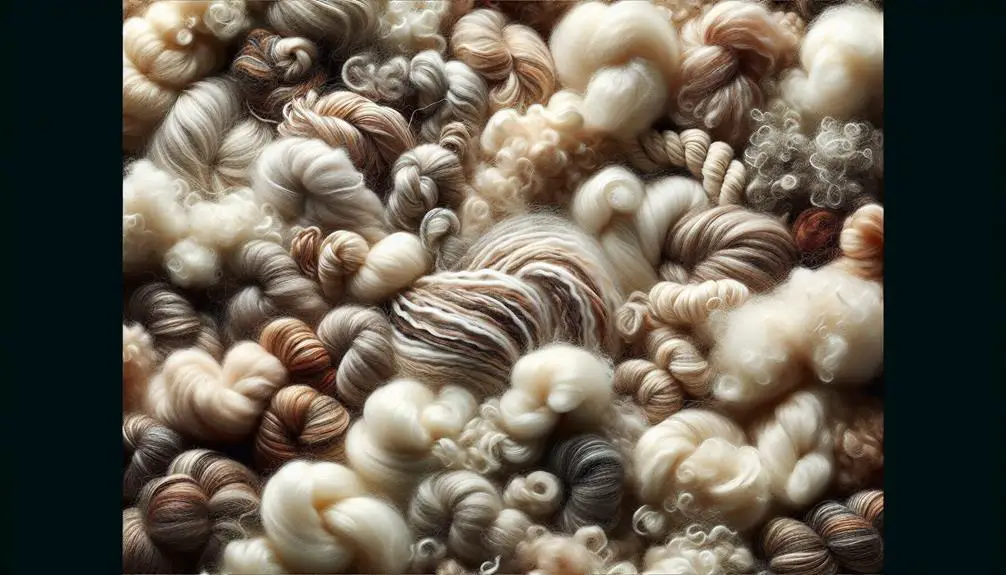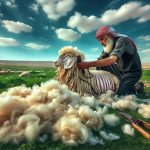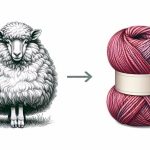I can tell you that wool, from animals like sheep, goats, and alpacas, has unique qualities that make it stand out from synthetic materials. Wool regulates body temperature well, insulates across different climates, and is moisture-wicking and naturally stretchy. Its breathable fabric also keeps clothing fresh longer. These characteristics make wool a versatile and beneficial material for various uses.
Table of Contents
Key Takeaways
- Wool is a natural, renewable fiber from animals like sheep and goats.
- Wool fibers are moisture-wicking, elastic, and regulate body temperature effectively.
- Wool is insulating, breathable, and odor-resistant, making it versatile for various climates.
- Wool is sustainable, eco-friendly, and biodegradable, with low environmental impact.
- Wool's unique structural features like helical shape and scales provide durability and resilience.
Natural and Renewable Characteristics of Wool
Highlighting the natural and renewable qualities of wool, it emerges as a sustainable fiber sourced from animals like sheep, goats, and alpacas.
Wool fibres, being a natural fibre, possess unique properties that set them apart from synthetic materials. Wool fabrics are known for their ability to regulate body temperature, making them ideal for various climates.
This natural fibre has insulating properties, trapping heat during cold weather while remaining breathable in warmer conditions. Wool is also moisture-wicking, drawing sweat away from the body and keeping the wearer dry and comfortable.
Additionally, wool is naturally elastic, allowing for flexibility and durability in clothing items. The biodegradability of wool further enhances its sustainability, as it breaks down naturally without causing harm to the environment.
These inherent qualities make wool a preferred choice for eco-conscious consumers seeking comfort, functionality, and sustainability in their clothing.
Innovative and Functional Properties of Wool
Having investigated the natural and renewable characteristics of wool, let's now probe into its innovative and functional properties that make it a versatile and sought-after material in the textile industry.
Wool is naturally breathable, allowing air to circulate and helping regulate body temperature, making it ideal for various climates. Its unique odor-resistant properties keep clothing fresh even after extended wear, a feature highly valued in activewear and everyday garments.
Additionally, wool's elasticity provides natural flexibility and durability, allowing for comfortable movement without losing shape. An innovative material, wool is wrinkle-resistant, maintaining a neat and polished appearance with minimal effort.
These functional properties make wool a top choice for a wide range of clothing items, from cozy sweaters to high-performance athletic wear, showcasing its adaptability and desirability in the fashion world.
Sustainable and Eco-Friendly Aspects of Wool
Wool stands out as a sustainable and eco-friendly material due to its biodegradable nature and low environmental impact, making it a preferred choice in the textile industry. Being biodegradable means that wool breaks down naturally and quickly in soil, unlike synthetic fibers that can linger for hundreds of years. This characteristic makes wool a more environmentally friendly option, contributing to reducing waste and pollution. Additionally, wool is a renewable resource since it comes from the regrown hair of animals like sheep, which helps in minimizing its environmental footprint.
Furthermore, wool offers UV resistance and the ability to regulate body temperature, providing protection and comfort in various conditions. These features not only make wool a versatile choice but also a durable one, as it can withstand different climates and environmental stressors. With its combination of sustainability, biodegradability, low environmental impact, and unique functional properties, wool emerges as a conscious and reliable option for eco-conscious consumers and industries alike.
Unique Structural Features of Wool Fiber
With its unique helical structure attributed to keratin, wool fibers exhibit exceptional elasticity and resilience. The scales present on wool fibers contribute to their tear resistance and interlocking properties, enhancing durability. Additionally, the undulations on wool fibers help trap air, providing excellent insulation against both heat and cold. This natural insulation property makes wool a great choice for various climates. Moreover, wool's chemical composition and structure enable it to wick moisture away from the body, keeping the wearer dry and comfortable. The crimp in wool fibers not only adds to its elasticity but also aids in maintaining the fabric's shape over time, enhancing its longevity. These unique structural features of wool fibers make them ideal for a wide range of applications, from cozy winter garments to high-performance activewear.
| Feature | Description |
|---|---|
| Scales | Enhance tear resistance and interlocking properties |
| Insulation | Traps air for excellent thermal regulation |
| Moisture-wicking | Chemical composition allows moisture to be drawn away from the body |
| Elasticity | Crimp provides elasticity, aiding in shape retention and durability |
Versatile Benefits of Wool Fiber
An exceptional feature of wool fiber is its ability to naturally regulate body temperature throughout the changing seasons. Wool garments are breathable, allowing air to circulate and moisture to be wicked away, ensuring comfort in various climates.
This natural fiber adjusts to changes in body temperature, keeping you warm in winter and cool in summer. Additionally, wool has antibacterial properties, making it odor-resistant and inhibiting the growth of bacteria, which helps keep garments fresh even with extended wear.
The elasticity of wool is another benefit, as it retains its shape well, providing durability and flexibility in clothing. Its softness on the skin makes wool suitable for individuals with sensitivities.
Frequently Asked Questions
Which of the Following Is a Characteristic of Wool?
A characteristic of wool includes its unique protein fiber structure with scales that enhance durability and tear resistance. The fiber's ability to retain air for insulation, along with its elasticity and shape retention, make wool a versatile textile material.
What Trait Is Wool Known For?
Wool is known for its exceptional elasticity, durability, and comfort. Its tear-resistant scales, interlocking structure, and keratin concentration contribute to strength, moisture-wicking properties, and insulation. The unique helical structure and chemical composition make wool versatile and high-performing.
How Do You Describe Wool?
I describe wool as a protein fiber with unique properties. It has scales for tear resistance, retains air for insulation, and stretches without breaking due to its helical structure. Wool also wicks moisture excellently for comfort.
What Are the Characteristics of Wool and How Wool Keeps You Warm?
Wool's characteristics, like high keratin levels for resilience and elasticity, crimp for spinning, and air-holding capacity for insulation, keep me warm. Its moisture-wicking ability guarantees dryness, while elasticity maintains durability in various garments.
- How Does Ring Spun Cotton Affect Garment Fit and Shape Retention? - August 13, 2024
- What Are the Challenges in Producing Ring Spun Cotton? - August 13, 2024
- Is Ring Spun Cotton Suitable for Plus-Size Clothing? - August 13, 2024







